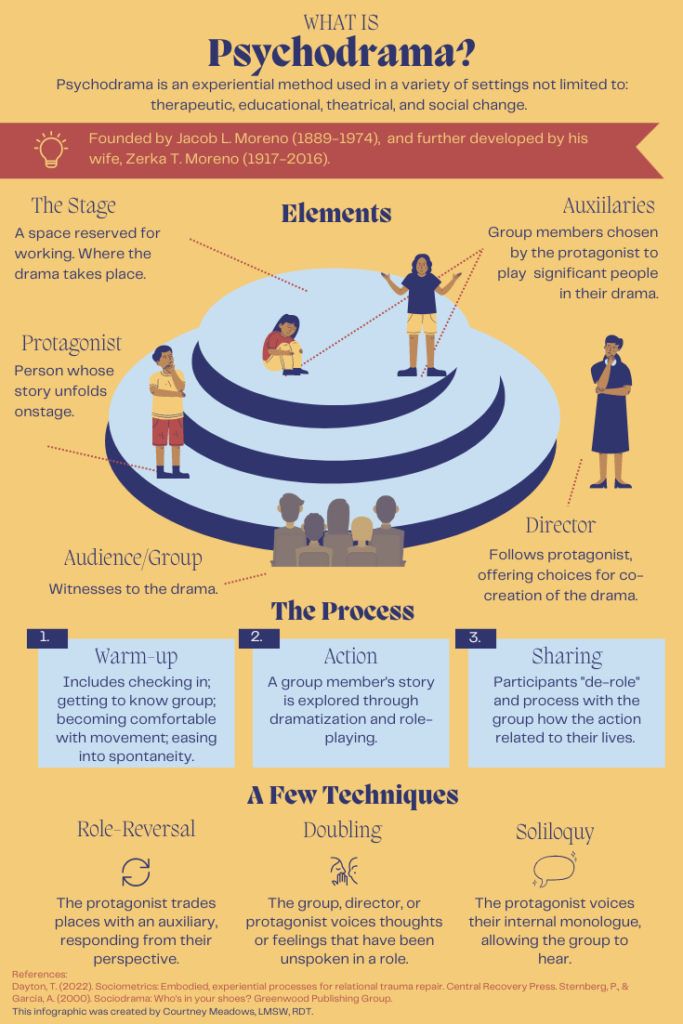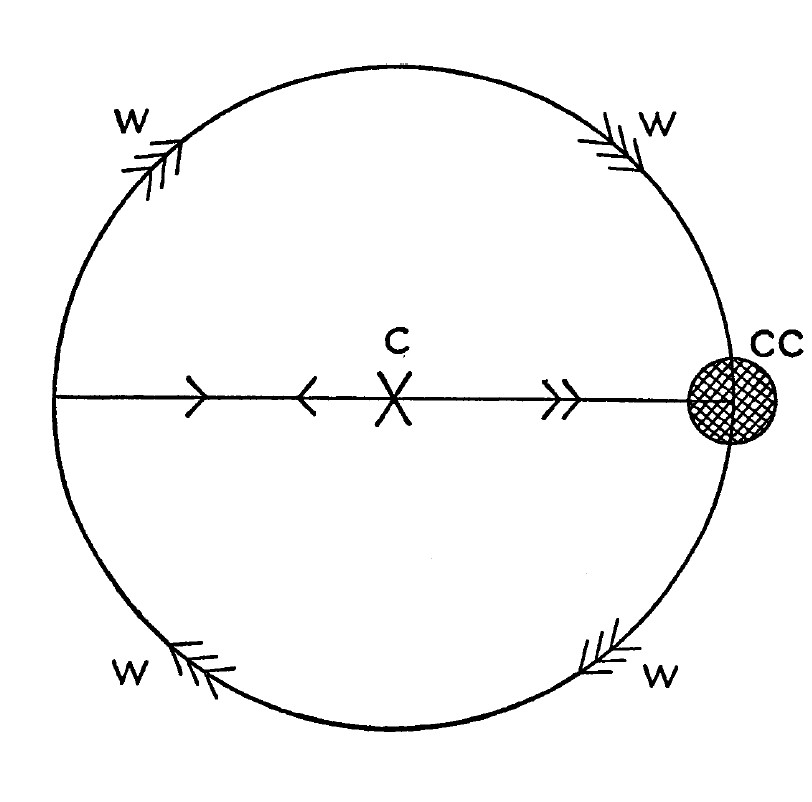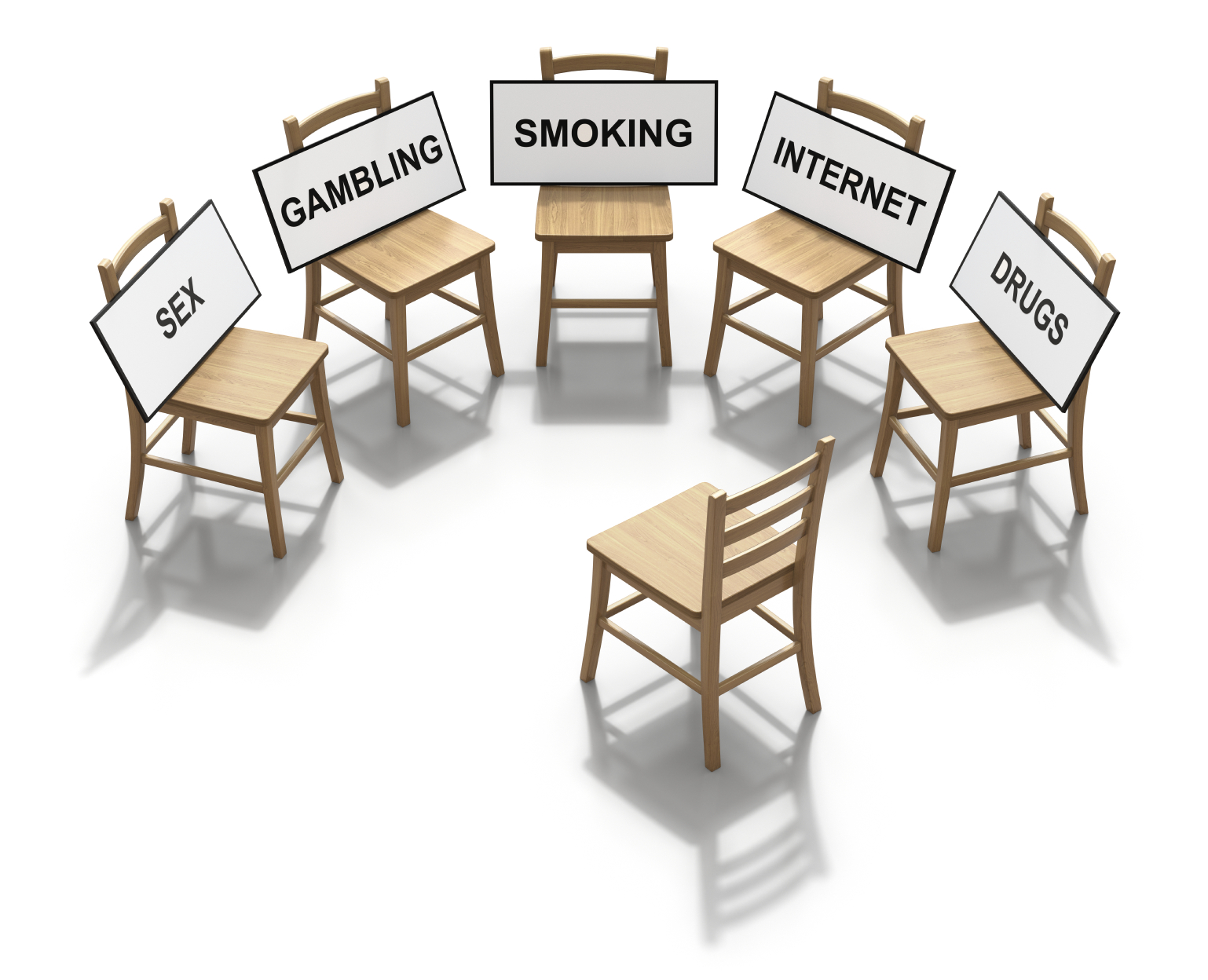Jacob Levy Moreno, also known as J.L. Moreno, was an Austrian-American psychiatrist, sociologist, and philosopher who made significant contributions to the field of psychology. Moreno is best known for his innovative approach to psychotherapy, which included the development of psychodrama, sociometry, and group psychotherapy.
Despite his groundbreaking work, Moreno did not receive the recognition he deserved during his lifetime and remains relatively unknown outside of the field of psychology.
Moreno was born on May 18, 1889, in Bucharest, Romania, and spent most of his childhood in Vienna, Austria. He received his medical degree from the University of Vienna and went on to complete his training in psychiatry at the Vienna General Hospital. Moreno’s early work in psychiatry was heavily influenced by his interest in the theater, and he began to experiment with role-playing and improvisation as therapeutic tools.
The Development of Psychodrama

J.L. Moreno developed psychodrama in the early 20th century. This technique involves role-playing and improvisation to help patients explore their emotions and experiences.
Moreno believed that traditional talk therapy was limited because it only allowed patients to talk about their experiences, but did not give them the opportunity to “act out” their feelings.
Psychodrama, on the other hand, allowed patients to re-enact their experiences in a safe and controlled environment. Moreno believed that this approach would help patients gain insight into their emotions and experiences in a more tangible way.
The first psychodrama session was held in Vienna in 1921, and by the 1930s, Moreno had established the first psychodrama institute in New York. Psychodrama has since evolved to include other techniques such as sociodrama, which explores social issues, and bibliodrama, which uses literature as a basis for role-playing.In 1925, Moreno developed psychodrama, which he described as “the science that explores the truth by dramatic methods.”
Psychodrama involves the use of role-playing and improvisation to help patients gain insight into their emotions and experiences. Moreno believed that psychodrama was more effective than traditional talk therapy because it allowed patients to experience and express their emotions in a more tangible way.
The Development of Sociometry
Moreno also developed sociometry, which is the study of social relationships and group dynamics. Sociometry involves the use of various techniques to measure and analyze the relationships between members of a group. Moreno believed that understanding the dynamics of a group was essential to successful psychotherapy and that sociometry was an important tool for achieving this understanding.
Sociometry is the study of social relationships and group dynamics, and Moreno developed this technique in the 1930s. Moreno believed that understanding the dynamics of a group was essential to successful psychotherapy, and sociometry was an important tool for achieving this understanding. Sociometry involves the use of various techniques to measure and analyze the relationships between members of a group, including sociograms and group psychotherapy.
Sociometry is the study of social relationships and group dynamics, and Moreno developed this technique in the 1930s. Moreno believed that understanding the dynamics of a group was essential to successful psychotherapy, and sociometry was an important tool for achieving this understanding. Sociometry involves the use of various techniques to measure and analyze the relationships between members of a group, including sociograms and group psychotherapy.
Sociograms are diagrams that show the relationships between members of a group. Moreno believed that sociograms could be used to identify individuals who were isolated or excluded from the group, and to develop strategies for improving group dynamics.

Sociograms are diagrams that show the relationships between members of a group. Moreno believed that sociograms could be used to identify individuals who were isolated or excluded from the group, and to develop strategies for improving group dynamics.
Group psychotherapy involves treating patients in a group setting, and Moreno believed that group therapy was more effective than individual therapy because it allowed patients to share their experiences and support each other in a safe and controlled environment.
The Development of Group Psychotherapy
In addition to psychodrama and sociometry, Moreno also developed group psychotherapy, which is a form of psychotherapy that involves treating patients in a group setting. Moreno believed that group therapy was more effective than individual therapy because it allowed patients to share their experiences and support each other in a safe and controlled environment.
Moreno also developed group psychotherapy, which is a form of psychotherapy that involves treating patients in a group setting. Moreno believed that group therapy was more effective than individual therapy because it allowed patients to share their experiences and support each other in a safe and controlled environment. Group therapy also allowed patients to explore their interpersonal relationships and develop social skills.
Moreno’s work in group psychotherapy began in the 1930s and continued throughout his career. He established the first group psychotherapy institute in New York in 1942, and his work in this field continues to influence the way we approach group therapy today.
Moreno integrated his visionary and activist roles in the development of psychodrama.
Moreno was a psychiatrist in Vienna and a colleague of Sigmund Freud. During this blossoming of what we now call psychotherapy, and during a time when there was a flourish of new artistic and expressionist thought, Moreno developed psychodrama.
Dr. Freud, you meet in your office, I meet in the streets, you analyze dreams, I teach people to dream again, you tear them apart, I act out their conflicting roles and put them back together again.”
J.L. Moreno
According to Moreno, even while Freud was himself revolutionary in his development of the new field, he was nevertheless stuck in his own cultural conserve or perhaps that of the scientific method, or academia etc. Moreno believed in helping people become more spontaneous, to move past their traumas, to become “unstuck.” (A “conserve” is a group or cluster of attitudes and activities that organize behavior along prescribed lines).
A person’s cultural conserve often takes the form of “rolls” and thus define individuals. Moreno believed that our identity is an instantiation of the multitude of roles we play. These roles are further instantiated in our relationships with others, which are reciprocal. To have a mother we must be a child. The role of child therefore requires the reciprocal role of mother. These roles can be diagramed as a social atom, and social atoms collected into sociograms or social molecules. All these relationships are imbued with expectations and agreed upon behaviors, and these behaviors and expectations become conserved).
Moreno Challenged Many Cultural Conserves
Another way Moreno challenged Vienna’s cultural conserve was in his theater of spontaneity. Moreno challenged the leadership of the time, and in one instance, invited people to a theater. On the stage he placed a chair, and he invited audience members to take the chair, and become the leader, and speak from that role. The idea was to challenge the conserve of the role of leader.
Another example would be his work with prostitutes. At the time sex workers were considered loathsome, and they were marginalized, not having access to things like medical care and the benefits of citizenship. Moreno went into this population and treated them as individuals full of human dignity. He learned that the prostitutes, when sharing their struggles and needs with one another became therapeutic aids of one another, he faded into the background as the group healed itself (we are harmed in groups we can be healed in groups).
Moreno continued to challenge the cultural conserves at the time in his work in sing sing prison, and in the girl’s reform school and in the Tyrolean war refugee camp in WWI. In each of these instances he removed the central authoritarian from all the decision making and gave the “power” back to the “people” in that he allowed decisions of with whom to live work and play to the individuals themselves. In each instance he was able to demonstrate that giving choice created better results (fewer runaways, higher work productivity, lower illness etc.)
From the theater of spontaneity and the living newspaper, Moreno developed the concept of sociodrama, from the work with the various incarcerated populations he developed sociometry and from his work with the prostitutes he developed group therapy, and as he refined these concepts and worked with other populations, such as in the psychiatric hospital, he ultimately synthesized this all into psychodrama.
Moreno Failed to Receive Credit for His Contributions
Despite the success of his theories and methods, Moreno did not receive the recognition he deserved during his lifetime. Many psychologists and psychiatrists at the time were resistant to his ideas, and some even dismissed them as unscientific. Moreno’s Jewish heritage and unorthodox methods may have also contributed to his lack of recognition.
Moreno’s contributions to the field of psychology are now widely recognized, and his theories and methods continue to influence the way we approach psychotherapy today. Psychodrama, sociometry, and group psychotherapy are now widely used in the field of psychology and have been shown to be effective in treating a wide range of mental health conditions.
J.L. Moreno was a visionary psychiatrist and philosopher who made significant contributions to the field of psychology. His development of psychodrama, sociometry, and group psychotherapy were groundbreaking at the time and continue to influence the way we approach psychotherapy today. While Moreno did not receive the recognition he deserved during his lifetime, his legacy lives on through his contributions to the field of psychology.

